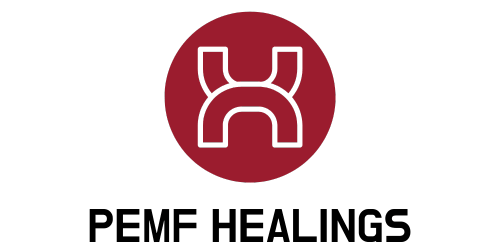Imagine having a non-invasive therapy that could potentially improve your body’s ability to fight cancer. That’s where Pemf Cancer comes in. This revolutionary treatment utilizes Pulsed Electromagnetic Field therapy, also known as PEMF, to target cancer cells and stimulate your immune system. By harnessing the power of electromagnetic fields, Pemf Cancer offers a promising alternative for those seeking a more holistic approach to their cancer treatment. Discover the incredible potential of PEMF therapy and its role in the fight against cancer.

What is PEMF?
Definition of PEMF
PEMF, which stands for Pulsed Electromagnetic Field therapy, is a non-invasive and drug-free approach that uses electromagnetic fields to stimulate the body’s natural healing process. This therapy involves the application of electromagnetic fields to specific areas of the body, promoting cellular regeneration and overall well-being.
How PEMF therapy works
PEMF therapy works by delivering pulses of electromagnetic energy to the cells, tissues, and organs in the body. These pulsed electromagnetic fields penetrate deep into the body, stimulating cellular activity and promoting various physiological processes. By enhancing cellular metabolism, increasing blood circulation, and modulating the body’s bioelectrical system, PEMF therapy helps to optimize the body’s natural healing abilities.
Understanding Cancer
Definition of cancer
Cancer is a complex and multifaceted disease characterized by the abnormal and uncontrolled growth of cells in the body. These abnormal cells can invade nearby tissues and spread to other parts of the body, leading to the formation of tumors. There are various types of cancer, each with its own set of characteristics and treatment approaches.
Causes and risk factors for cancer
The development of cancer is influenced by a variety of factors. While the exact causes of cancer can vary depending on the type of cancer, certain risk factors have been identified. These risk factors include genetic predisposition, exposure to certain chemicals or toxins, tobacco and alcohol use, poor diet, physical inactivity, obesity, and exposure to ionizing radiation. It is important to note that not all individuals with risk factors will develop cancer, as the disease is often the result of a complex interplay of multiple factors.
Conventional Cancer Treatments
Surgery
Surgery is one of the main approaches used in the treatment of cancer. It involves the removal of the cancerous tissue or tumor from the body. Surgical procedures can vary depending on the location and extent of the cancer. In some cases, surgery may be curative, while in others, it may be performed as part of a larger treatment plan, such as to remove tumors before undergoing chemotherapy or radiation therapy.
Chemotherapy
Chemotherapy is a systemic treatment that uses drugs to kill cancer cells or inhibit their growth. These drugs can be administered orally or through intravenous infusion. Chemotherapy is often used to target cancer cells that have spread throughout the body, as it can reach cancer cells that may be difficult to remove through surgery. While chemotherapy can be effective in destroying cancer cells, it can also lead to various side effects, such as nausea, hair loss, fatigue, and an increased susceptibility to infections.
Radiation therapy
Radiation therapy uses high-energy radiation, such as X-rays or protons, to target and destroy cancer cells. This treatment can be delivered externally or internally, depending on the type and location of the cancer. External radiation therapy involves directing radiation beams towards the cancerous area, while internal radiation therapy involves the insertion of radioactive materials into the body near the cancerous cells. Radiation therapy can have side effects, such as fatigue, skin changes, and damage to healthy tissues near the treatment site.
Challenges in Cancer Treatment
Side effects of conventional treatments
While conventional cancer treatments can be effective in fighting cancer, they often come with significant side effects. Chemotherapy, for example, can cause nausea, vomiting, hair loss, fatigue, and a weakened immune system. Radiation therapy can lead to skin changes, fatigue, and damage to healthy tissues. These side effects can negatively impact a patient’s quality of life and may require additional treatments or interventions to manage.
Limited effectiveness in some cases
Despite advances in cancer treatment, there remain cases where conventional therapies have limited effectiveness. Some cancers may not respond well to certain treatments or may develop resistance over time. Additionally, the side effects associated with conventional treatments may limit their effectiveness in certain individuals, especially those who are frail or have underlying health conditions. As a result, there is a need for alternative approaches that can complement or enhance traditional cancer treatments.
Introducing PEMF for Cancer Treatment
Overview of PEMF therapy as an alternative approach
PEMF therapy has emerged as a promising alternative approach in the treatment of cancer. By stimulating the body’s natural healing mechanisms, PEMF therapy aims to enhance the overall well-being of cancer patients and improve treatment outcomes. This therapy is non-invasive, painless, and does not require the use of drugs, making it a safe option for individuals undergoing cancer treatment.
Benefits of PEMF for cancer patients
PEMF therapy offers several potential benefits for cancer patients. It can help alleviate pain and inflammation, reduce fatigue, improve sleep quality, and boost overall energy levels. Additionally, PEMF therapy may enhance the effectiveness of conventional cancer treatments by improving cellular metabolism, increasing oxygenation, and enhancing the delivery of therapeutic agents to cancerous cells. This complementary approach has the potential to improve patients’ response to treatment and help manage treatment-related side effects.
Evidence and Research
Studies on the effects of PEMF on cancer cells
Numerous studies have investigated the effects of PEMF therapy on cancer cells. These studies have shown promising results, suggesting that PEMF therapy may have anti-cancer effects. For example, research has demonstrated that PEMF therapy can inhibit cell proliferation, induce apoptosis (programmed cell death), and disrupt the growth of blood vessels that support tumor growth. Furthermore, some studies have shown that PEMF therapy can increase the effectiveness of chemotherapy and radiation therapy when used in combination.
Clinical trials and case studies
While more research is needed, there have been several clinical trials and case studies exploring the use of PEMF therapy in cancer treatment. These studies have shown encouraging outcomes, with improvements in overall survival rates, tumor shrinkage, and quality of life among cancer patients receiving PEMF therapy. However, it is important to note that individual results may vary, and further research is required to establish the full potential and optimal use of PEMF therapy in cancer treatment.
Mechanisms of Action
How PEMF affects cancer cells
The precise mechanisms by which PEMF therapy affects cancer cells are still being elucidated. However, it is believed that PEMF therapy can disrupt the abnormal signaling pathways that contribute to cancer cell growth and proliferation. PEMF therapy may also induce changes in the electrical properties of cancer cells, leading to alterations in cellular metabolism and gene expression. These changes can ultimately result in a reduction in cancer cell viability and increased sensitivity to other treatment modalities.
Stimulating anti-tumor immune response
In addition to its direct effects on cancer cells, PEMF therapy may also help stimulate the immune system’s anti-tumor response. Research has shown that PEMF therapy can enhance the activity of natural killer cells, which play a crucial role in recognizing and destroying cancer cells. Furthermore, PEMF therapy may help modulate the release of immune-regulating molecules, such as cytokines, which can promote an immune response against cancer cells. By enhancing the body’s immune defenses, PEMF therapy may contribute to a more robust and comprehensive approach to cancer treatment.
Potential Applications
Supporting conventional treatments
PEMF therapy can be used alongside conventional cancer treatments to support and enhance their effects. By improving blood circulation and oxygenation, PEMF therapy may enhance the delivery of chemotherapy drugs and radiation therapy to cancer cells, potentially increasing treatment effectiveness. Moreover, PEMF therapy can help reduce treatment-related side effects and improve recovery, allowing patients to better tolerate their conventional treatments and maintain a better quality of life throughout their cancer journey.
Managing treatment side effects
One of the significant advantages of PEMF therapy is its ability to mitigate the side effects associated with conventional cancer treatments. By reducing inflammation and pain, improving sleep quality, and promoting overall relaxation, PEMF therapy can help alleviate the adverse effects of chemotherapy and radiation therapy. This can lead to increased treatment adherence, decreased treatment interruptions, and an overall improved well-being for cancer patients undergoing conventional treatments.
Improving overall well-being of cancer patients
Beyond its specific applications in cancer treatment, PEMF therapy has the potential to improve the overall well-being of cancer patients. By promoting relaxation, reducing anxiety and stress, and improving sleep quality, PEMF therapy can help individuals cope with the emotional and psychological challenges that often accompany a cancer diagnosis. This comprehensive approach to cancer care focuses on the holistic needs of patients and supports their physical, mental, and emotional well-being throughout the treatment process.
Safety and Precautions
PEMF therapy and contraindications
While PEMF therapy is generally considered safe, there are certain precautions and contraindications to be aware of. Individuals with implanted electronic devices, such as pacemakers or cochlear implants, should consult with their healthcare professionals before undergoing PEMF therapy. Additionally, individuals with certain medical conditions, such as epilepsy or pregnancy, should also seek medical advice before starting PEMF therapy. As with any treatment, it is important to ensure that PEMF therapy is administered by qualified professionals who can tailor the treatment to the individual’s specific needs and medical history.
Consultation with healthcare professionals
Before considering PEMF therapy as a complementary approach to cancer treatment, it is crucial for individuals to consult with their healthcare professionals. It is important to have an open and honest discussion about the potential benefits and risks of PEMF therapy, as well as its potential interactions with conventional treatments. Healthcare professionals can provide valuable guidance and help individuals make informed decisions regarding their treatment options.
Future Perspectives
Advancements in PEMF technology
As research on PEMF therapy continues to progress, advancements in technology are expected to further enhance its potential in cancer treatment. The development of more precise and targeted PEMF devices may allow for more effective delivery of electromagnetic fields to specific areas of the body, optimizing treatment outcomes. Moreover, ongoing research on the optimal parameters, such as frequency, intensity, and duration, of PEMF therapy for various types of cancer may lead to more personalized and tailored treatment approaches.
Integration of PEMF therapy in cancer care
With the growing body of evidence supporting the use of PEMF therapy in cancer treatment, there is a potential for its integration into mainstream cancer care. As healthcare professionals become more acquainted with the benefits and mechanisms of PEMF therapy, it may become a more widely accepted and utilized complementary treatment option. The collaboration between conventional cancer treatments and PEMF therapy can provide patients with a comprehensive approach to cancer care, addressing both the disease itself and the physical and emotional well-being of the patients.
In conclusion, PEMF therapy holds promise as an alternative approach in the treatment of cancer. With its non-invasive nature, lack of significant side effects, and potential benefits in supporting conventional treatments and improving overall well-being, PEMF therapy offers a complementary avenue for cancer patients. However, further research is needed to better understand the mechanisms of action and optimal use of PEMF therapy, and individuals should always consult with their healthcare professionals before considering any additional treatments for cancer. With ongoing advancements in technology and increasing awareness of this therapy, the future integration of PEMF therapy in cancer care may provide a more holistic and personalized approach to cancer treatment.


